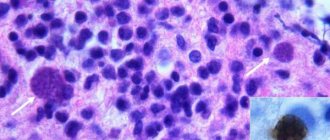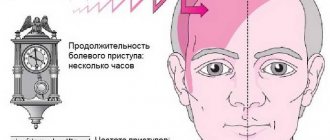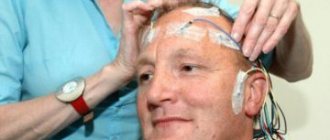Not long ago, depressive disorders were not taken very seriously. The condition was considered far-fetched, and the suffering person was considered a weakling and a malingerer.
At the moment, pathology is officially included in the list of mental disorders. According to statistics, the diagnosis affects every tenth adult. Depression is most common in women - 2/3 of patients belong to the fair half of humanity.
The condition comes in many different forms and causes. Often it develops after childbirth, occurs against the background of the menstrual cycle, or is a consequence of experienced events. Regardless of the etiology, you should not neglect your own health. It is important to seek help as soon as possible at the first signs of depression.
What it is
Depressive mental disorder is a disease that occurs in psychology as often as a cold at a therapist’s appointment. All people are susceptible to it, regardless of age, gender, race and social status. Even children in adolescence already feel the first signs.
Do not confuse depression with blues or bad mood. You should never “prescribe” yourself antidepressants - these drugs will only make the situation worse. It’s worth taking a closer look at your mental health so you know how to recognize the first signs.
What are the factors that trigger the process? First of all, since this is a physiological level, these are hormonal surges. Then stress. Hormones change their content in the blood in several cases:
- Puberty. This is a period of 12-15 years, which is also important from the point of view of the development of a woman’s mental state.
- Pregnancy. During pregnancy, hormone levels often go through the roof, but after childbirth, apathy sets in, which can continue without treatment for up to a year.
- Gynecological diseases, as well as ailments related to the thyroid gland.
- Menopause is a rather protracted period, it can last up to 7-10 years, during which the body is completely rebuilt. It is at the age of 40-50, if early menopause occurs, that depressive disorder is most likely.
How to recognize depression in a woman by symptoms
Despite the fact that this is a mental illness, the symptoms manifest themselves not only on the psycho-emotional level, but also on the somatic, that is, bodily. First, I will note the signs of a psychological state:
- Changes in sleep – expressed as either drowsiness or insomnia.
- Constant mood swings with frequent bursts of tears, touchiness and increased anxiety.
- Attacks of self-flagellation - the patient constantly blames himself for an unhappily arranged (in his opinion) life, for mistakes that, perhaps, he did not even make.
- Increased irritability, which leads to frequent quarrels out of nowhere and conflicts.
- It becomes more difficult to concentrate on one activity, especially monotonous ones.
- Low self-esteem, dissatisfaction with one's appearance and internal traits.
- There are no aspirations: if before there were dreams and goals, now it is a purposeless existence, the patient simply does not know what she lives for.
- Suicidal tendencies, they may not reach the point of action or serious intentions, but thoughts appear: “What if,” “What if.”
- There is no interest in what previously led to a state of attentiveness or brought pleasure, that is, hobbies and former interests are lost.
- Changes in gastronomic preferences - some girls lose weight out of grief, others “eat it up.”
- Nervous overstrain - the patient is literally “all on nerves”; he experiences increased impulses from every irritant - from light, sound, touch.
- Apathy towards everything that happens, even towards the school success of children.
Just as everyone’s psyche and nervous system are different, so can their manifestations. How does depression manifest itself in women, in terms of somatic symptoms?
Psychologist Daria Milai
Make an appointment
- Swelling of the entire upper body appears, this is especially noticeable in the face and hands - bags under the eyes, rings become small.
- Itching, allergic spots.
- The body begins to ache - muscle fatigue is especially felt after any, even the smallest physical activity, for example, after cleaning the house.
- Increased heart rate.
- The chest begins to compress - painful sensations may be accompanied by tingling.
- Blood pressure surges.
- Increased sweating.
- Headaches that progress to migraines.
Symptoms
Depression has a variety of clinical manifestations, and its symptoms vary widely among women. However, psychologists have identified a triad of signs that are characteristic of all types of depressive disorders:
- Persistent decrease in mood.
- Slowness of thought processes.
- Slowness of action.
Decreased mood is expressed in chronic melancholy. The woman complains about life, the feeling of hopelessness does not leave her. It seems to her that there is simply no point in further existence. Activities that previously brought joy and pleasure now become boring and unimportant. Self-esteem drops. As the disease progresses, thoughts of suicide appear. The woman stops discussing her problems with loved ones and withdraws into herself. The patient begins to incline to the idea that she is the cause of all misfortunes, poisoning the life not only of herself, but also of her family. Although there are also clinical cases in which depressed individuals blame the people around them, or one person, for all the troubles.
Lack of emotions and feelings is another characteristic of depressive disorder. Patients complain of a lack of will; they cannot collect their thoughts and force themselves to get rid of the negative.
The mood becomes changeable. It can be elevated in the morning and drop sharply in the evening. This clinical picture is characteristic of psychogenic affective disorders.
Slow thinking processes lead to difficulties in planning. It is difficult for a woman to cope not only with work, but also with everyday responsibilities. She has difficulty perceiving information, and memory problems become obvious. To force yourself to focus on a specific task, you have to make serious efforts.
Deep inhibition can unexpectedly turn into frenzy. During such periods, the feeling of despair gains maximum strength, which can result in self-harm. It is at these moments that the likelihood of suicide is high.
You can understand that the patient’s mental activity is impaired by her speech. She's getting slow. It is difficult to get a woman to talk. There are long pauses during the dialogue. The answers to the questions are monosyllabic. Patients spend most of their time in silence.
Movement disorders boil down to clumsiness and excessive slowness. The patient may remain motionless for a long time. When she sits, her shoulders are slumped forward, her head is tilted down, and her elbows rest on her knees. The face often resembles a motionless, frozen mask that expresses melancholy.
In addition to the signs included in the classical triad, patients develop disorders of the somatovegetative sphere. These include:
- Insomnia. Sometimes women fall asleep normally, but wake up very early. This makes them feel groggy and tired during the day.
- Lack of appetite.
- Constipation.
- Pupil dilation.
- Tachycardia.
- Increased sweating.
- Heartache.
- Headache.
The patient's appearance changes. The condition of the skin worsens and it becomes dry. Wrinkles appear on the face, giving an aged appearance. Hair begins to fall out, nails peel and break. Weight most often decreases. Although, with an atypical course of depression, it may, on the contrary, increase. This is associated with overeating.
The menstrual cycle undergoes changes. Menstruation becomes irregular or stops completely. The desire for the opposite sex decreases, the desire to enter into intimate relationships disappears.
Relapses of the disease can occur several times a year. Exacerbations occur in spring and autumn.
Symptoms of postpartum depression
A woman on maternity leave is more likely to develop the disease. To understand how postpartum depression manifests itself, you need to take a close look at the young mother. First of all, the husband should do this.
The following symptoms indicate a developing mental disorder:
- Sleep disturbance.
- Refusal to eat or overeating.
- The appearance of obsessive phobias, for example, fear of illness or death of a child, fear of husband’s betrayal, fear for one’s own life, etc.
- Regularly recurring hysterics, short temper, aggressiveness.
- Apathy.
- Tendency to suicidal thoughts, attempts to harm oneself.
Sometimes a sick girl stops caring for the baby, refuses to approach him, or deliberately harms his health. The likelihood of developing postpartum depression increases in women whose pregnancy was difficult.
The disease can be provoked by severe stress, chronic physical fatigue, and the young age of the woman in labor. There is a high likelihood of depression in people with a family history and severe hormonal imbalance.
According to the latest data, postpartum depression develops in 50% of young mothers. However, no more than 15% of women require serious treatment.
If at least one of the listed signs persists for 2 weeks or more, you need to seek help from a psychologist. If left untreated, the likelihood of developing postpartum psychosis increases.
Depression during menopause
The turning point in every woman’s life is the period of entering menopause. The average age of onset of menopause is 45 years. The reasons for the development of depression can be different, including:
- Concerns about changes in appearance.
- Hormonal changes.
- Dissatisfaction with life lived.
- Marriage or marriage of a child, his departure from the parental home.
- Somatic diseases.
The symptoms of depression during menopause are not fundamentally different, but the course of the disease can be aggravated by hormonal changes.
Manifestation of depression in women with complications
In severe and advanced cases, when neither drug therapy with medical assistance nor friendly support was provided on time, girls may begin to experience symptoms of social isolation, which sometimes lead to suicide. Here are some more consequences of depressive mental disorder:
- Alcoholism. It all can start with the patient using alcohol to normalize sleep, relieve fatigue, and improve mood. Then the doses of alcohol-containing drinks become higher, and the precedents become more frequent. Addiction can be not only alcoholic, but also drug addiction.
- Suicidal tendencies. An attempt to cut veins or take pills may be ostentatious so that the person will be noticed and treated. If you have encountered such a situation, take your friend to a specialist.
- Development of physical pathologies. The systems most susceptible to mental illness are the cardiovascular and gastrointestinal tract.
- Complete lack of sexual desire, frigidity.
- Obesity and diabetes mellitus or, on the contrary, dystrophy, bulimia.
- Social phobias are the fear of communicating with people, the fear of leaving a room, a confined space.
- With severe postpartum depressive disorder, young mothers sometimes have a tendency to harm the child.
Stages and forms
Psychiatry distinguishes three main stages of depression: mild, moderate and severe. The mild form is characterized by very weak manifestations and with the right approach you can get out of it on your own without much difficulty. Most often, this disorder is practically asymptomatic or has very weak periodic symptoms. But in the absence of a timely response, the disease takes chronic forms and lasts for years. Mild depression in most cases is caused by a lack of the hormone serotonin. The disease can be expressed by the following symptoms:
- migraine;
- feeling of emptiness;
- causeless sadness;
- loss of interest in life;
- mental and physical inhibition;
- indigestion;
- sleep disturbance;
- joint pain.
At the middle stage, the disorder becomes permanent and obsessive. The woman becomes passive and has difficulty controlling her condition. Thoughts have a consistently negative connotation, and systematic sleep disturbances further aggravate the situation. The remaining symptoms are generally similar to the symptoms of the initial stage, but at this stage they are much more pronounced.
Severe degree - deep depression, occurring in an extremely complex form. The usual way of life is completely disrupted, constant thoughts of suicide appear, absolute apathy towards the outside world, disorder of all body systems, delusions and hallucinations.
With such severe symptoms, a woman will no longer be able to get out of depression on her own, so she definitely and urgently needs the help of a specialist.
How to treat yourself: the main types of depression in women and their symptoms
I will describe the types of diseases that are diagnosed by specialists:
- Endogenous disorder. Mainly characterized by insomnia and apathy, retardation of movements, and bad mood.
- Manic illness. It is characterized by the appearance of megalomania and suspiciousness, strong swings in well-being and vividly expressed emotions. If it’s bad, it’s in tears, if it’s good, it’s in laughter.
- Masked. Usually it passes virtually asymptomatically, smoothly, unnoticed by others. But it often leads to alcoholism or drug addiction.
- Clinical. One of the most common, characterized by a constant depressed state, lack of appetite, and poor performance. It tends to drag on for several months and even years.
What type of depressive disorder manifests itself depends on the personality type and initial prerequisites, genetic characteristics.
Signs of Depression
Let's look at the main signs of depressive disorder:
The first striking sign is expressed in human behavior. With depression, a common accompanying feeling is pessimism, loss of interest in everything around you, tearfulness, causeless anxiety, and increased sensitivity to bad news.
The second sign can be considered slowed thought processes. A person does not assimilate new information well, they think slowly, and become fixated on unimportant things.
The third sign is motor retardation. The patient's movements are particularly drowsy, his facial expressions are stingy, he practically does not smile, and there is a particular laziness towards all physical exercises.
The fourth sign can only be noticed by talking with the patient. Thinking changes, and actions are added to negative thoughts about suicide.
The fifth sign includes changes in body functions. Appetite worsens, diarrhea, constipation may occur, and blood pressure may increase or decrease.
What causes depression in women: reasons
I will list the most common factors that affect life:
- Features of the female body. It is so inherent in nature that girls have a more subtle mental organization, increased sensitivity and constant hormonal changes.
- PMS. Statistics show that menstruation can also trigger depression. The mood worsens, the state of health deteriorates, the patient experiences periodic aching pain. And if this is superimposed on a bad life situation, stress, then the first stage of the disease results.
- Preclimatic changes. During perimenopause, hormones fluctuate greatly.
- Psychological problems: autumn blues, tendency to negative thinking or hysteria.
- Stress at work and school is one of the popular engines that triggers all depressive symptoms.
- Failures in love relationships. The cause of depression in women aged 30-40 is often divorce or awareness of betrayal or other negative factors associated with a spouse.
- Poor living conditions, low-paid jobs, poverty and other social problems often lead to low self-esteem, feelings of guilt, self-blame and depressive disorder.
- The presence of chronic diseases and constant use of medications that affect the nervous system and psyche.
- Heredity. Perhaps the parents also had manifestations of the disease.
- Poor environmental conditions, unsuitable climate.
- The death or illness of a loved one, another strong emotional shock.
Symptoms
Unlike depressed mood and fatigue, which disappear after proper rest and sleep, depression lasts for several months. Symptoms of depression at the psychological level are difficult to recognize externally; they are revealed only as a result of a personal conversation. You should pay attention to the following signs:
- An unreasonable feeling of sadness and melancholy;
- Lack of meaning in life;
- Apathy, unwillingness to do anything;
- Exacerbation of fears and phobias;
- Constant feeling of anxiety;
- Lack of joy in life;
- Exacerbation of complexes, low self-esteem;
- Mood swings;
- Paranoid thoughts;
- Hypochondria;
- Unreasonable concern for the life and health of loved ones;
- Thoughts about one's insignificance, suicidal thoughts.
Depression manifests itself at the physiological level with the following symptoms:
- Sleep problems (insomnia or excessive sleepiness);
- Changes in appetite (no or increased appetite);
- Digestive problems;
- Decreased or absent libido;
- Exacerbation of chronic diseases;
- Muscle pain, general weakness.
If you notice the above symptoms in your loved ones, it is advisable to talk with them, provide support and, if necessary, advise them to see a doctor. If a woman prone to neurasthenia shows signs of neurosis along with depressive syndrome, you need to seek help from a psychotherapist.
What to do for depression in women: advice from psychologist Daria Milai
I recommend:
- Change your usual image, daily routine, diet. Make positive changes in your life.
- Give up bad habits - alcohol, tobacco, drugs.
- Along with fresh food, consume all the necessary vitamins and microelements.
- Play sports, dance, take active walks, or practice another form of mobility.
- Spend more time outdoors, go out into nature, relax in parks.
- Leave time for leisure: watching a movie, reading a book.
- Communicate more with good people.
- Sleep at night, go to bed at 9-10 pm - sleep should take no more than 8-9 hours.
- Meditation is a great way to get to know yourself better.
- Avoid stress and communication with unpleasant people.
Symptoms and causes of depression in women after forty: what is it?
Against the backdrop of the first hormonal changes, the following often occurs:
- Children have already grown up and do not need their mother’s constant presence or support.
- Quarrels between spouses become stronger, and infidelity is often revealed.
- Divorces.
- Loneliness. If a woman has not married before forty, by this point she often loses hope of finding a legal husband.
- Career “ceiling” at work, reduction.
- Accumulated fatigue.
- The presence of diseases that begin to manifest themselves at this age.
If all this is accompanied by poor financial condition, absence of loved ones and friends, any stress factor, for example, the death of parents, can trigger a depressive disorder. It manifests itself as lethargy or irritability, tearfulness, self-flagellation, and constant bad mood.
Treatment
Drug therapy can only be prescribed by a doctor. Medicines should be taken according to schedule, without increasing or decreasing the dose. At the same time, you need to sign up for psychotherapy.
Psychiatrists
Consultations with doctors may be for informational purposes only. Meetings with the doctor are strictly confidential. Don't be afraid to make an appointment.
Psychiatric clinics
You can contact a psychiatrist at the hospital at your place of registration or at a specialized center. The second is preferable, since doctors with extensive experience work here.











